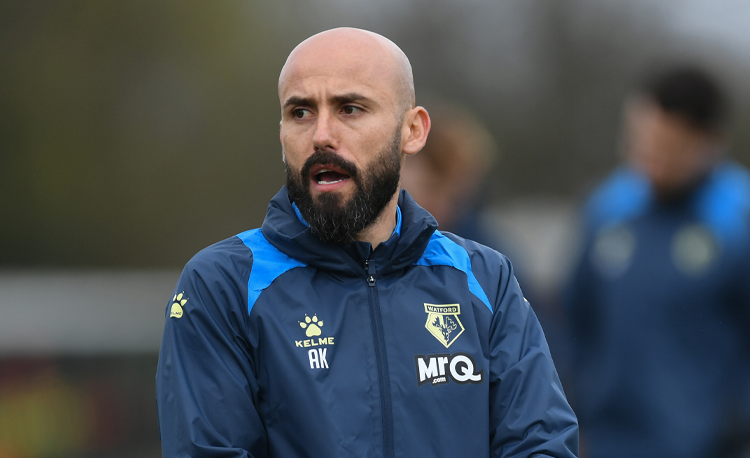Creating overloads in defence
Get your defenders creating 2v1s at the back to restrict the attacking threat. You want to see them efficiently and effectively closing down opponents in winning the ball, negating space between the lines.

| Area | Up to 60x40 yards |
| Equipment | Balls, cones, goals (full-size and target) |
| No. of Players | Up to 17 |
| Session Time | Games 20mins each |
This is a variable defensive session that looks at creating 2v1s at the back in restricting attacking threat.
It’s vitally important our players know how to efficiently and effectively close down opponents in winning the ball at the back, particularly given that this is an area where space between the lines is a vital target for opposition attackers.
And if your team is one that likes to operate with a counter-attacking strategy, or plays short and quick, then this allows this to happen with greater regularity.
Introducing a new role or responsibility will see the session start slower than before, so be prepared for this. In time, you will definitely see that players ‘want’ to defend and are prepared to work hard for the good of the team.
What do I get the players to do?
Defending 1v1
This is a series of 1v1s in a 20x20-yard square. In pairs, one tries to win the ball back off his opponent, who can use neutrals inside the squares to play off and retain possession (1).
1
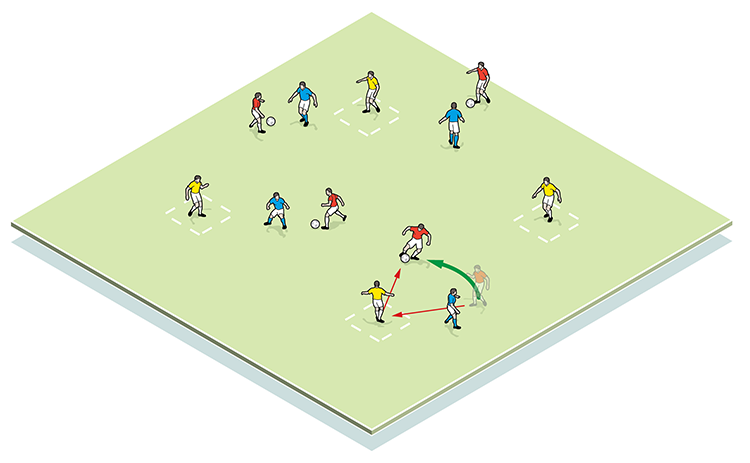
1v1 up to 2v2 defending
This is a simple 1v1 in a 20x10-yard area. Two servers link up before playing into the first or second 1v1 box (2a). Attackers look to score in the goal in their channel, though only the player receiving the ball, and his opponent, are active. Defenders must win possession and pass back to the servers.
2a

We can progress this game in two ways. First, defenders in the first area can recover and make a 2v1 in the deeper square. Then, defenders and attackers both join in the deeper square to make a 2v2 (2b).
2b
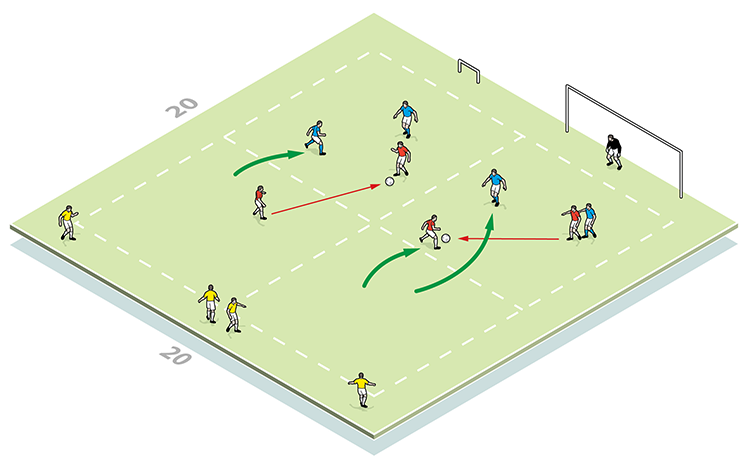
6v6 game with floaters
On a 60x40-yard pitch, this game is played 6v6 with teams lining up 2-2-2 (3). Boxed players (yellows) act as servers and targets for either side to attack or defend – passes can be grounded or floated. Three floaters (greys) play for the team in possession and can also score, but their main role is to create 2v1 attacking situations for defenders to deal with.
3

Central goal/wide goals
Still 6v6, one team defends the two smaller goals and the other the main goal (4a/4b). With the teams attacking different central and wide targets, the game is stretched, meaning defenders have to organise to repel attacks coming from different areas.
4a
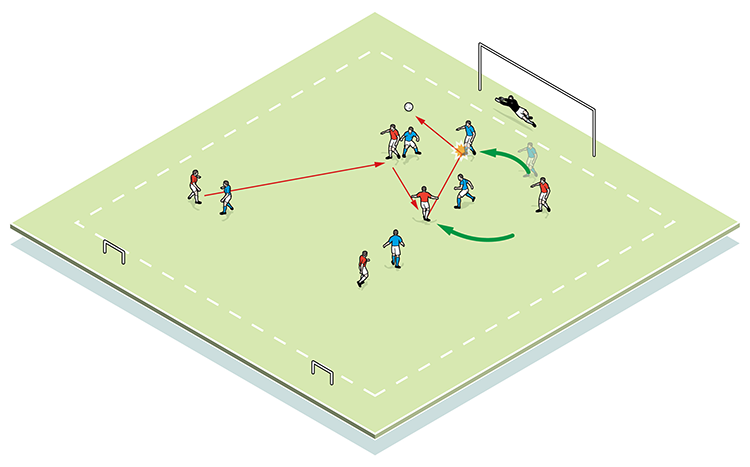
4b
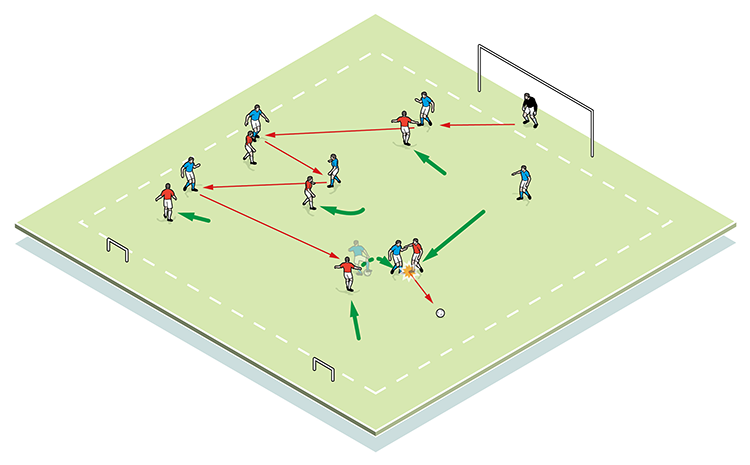
What are the key things to look out for technically/tactically?
It’s vital players understand what you want from them individually. I am a ‘mark players not space’ coach and am determined players can deal with all 1v1 defensive scenarios. Once players understand individually what you want from them, you can evolve their roles accordingly.
So we’re looking for defending 1v1 from behind, the front and the side, watching angles and distances from the ball, balance, body position, and ensuring players can see the ball at all times. Good tackling technique, patience and anticipation is also required.
Editor's Picks
Attacking transitions
Deep runs in the final third
Using the goalkeeper in build-up play
Intensive boxes drill with goals
Penetrating the final third
Creating and finishing
My philosophy
Pressing initiation
Compact team movement
Coaches' Testimonials

Alan Pardew

Arsène Wenger

Brendan Rodgers

Carlos Carvalhal

José Mourinho

Jürgen Klopp

Pep Guardiola

Roy Hodgson

Sir Alex Ferguson

Steven Gerrard
Coaches' Testimonials

Gerald Kearney, Downtown Las Vegas Soccer Club

Paul Butler, Florida, USA

Rick Shields, Springboro, USA

Tony Green, Pierrefonds Titans, Quebec, Canada
Join the world's leading coaches and managers and discover for yourself one of the best kept secrets in coaching. No other training tool on the planet is written or read by the calibre of names you’ll find in Elite Soccer.
In a recent survey 92% of subscribers said Elite Soccer makes them more confident, 89% said it makes them a more effective coach and 91% said it makes them more inspired.
Get Monthly Inspiration
All the latest techniques and approaches
Since 2010 Elite Soccer has given subscribers exclusive insight into the training ground practices of the world’s best coaches. Published in partnership with the League Managers Association we have unparalleled access to the leading lights in the English leagues, as well as a host of international managers.
Elite Soccer exclusively features sessions written by the coaches themselves. There are no observed sessions and no sessions “in the style of”, just first-hand advice delivered direct to you from the coach.








